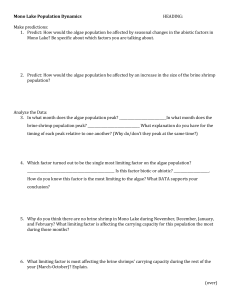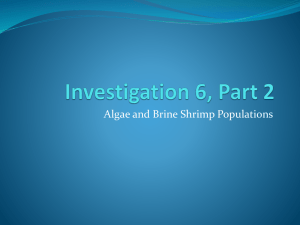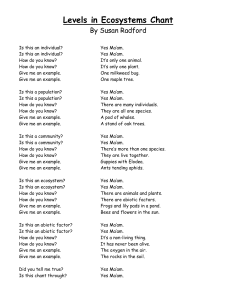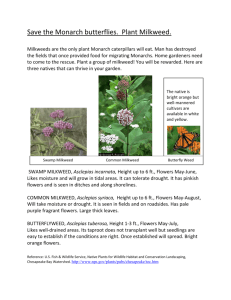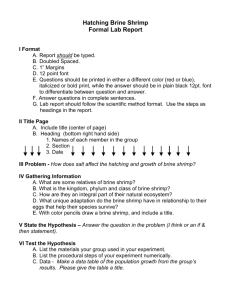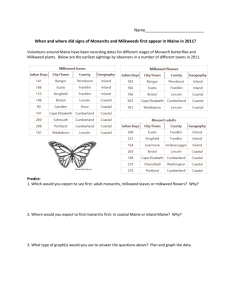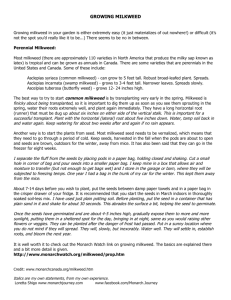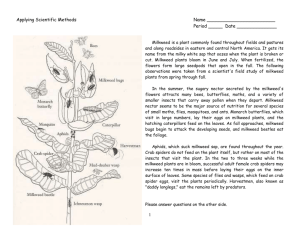Lesson Summary for Limiting Factors
advertisement
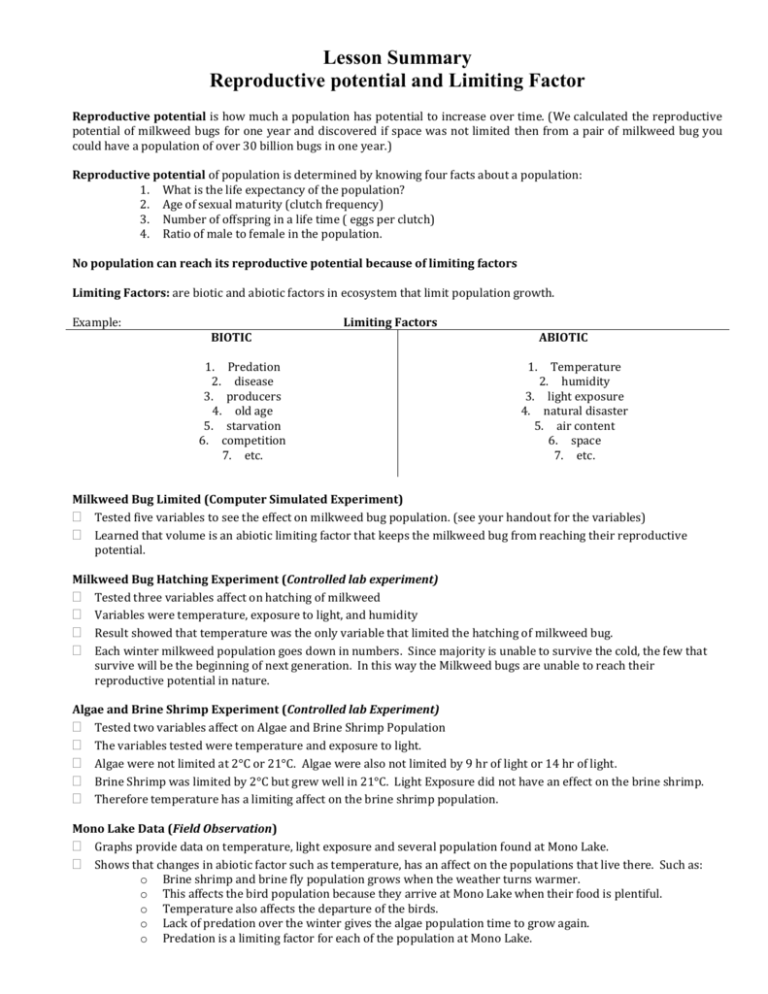
Lesson Summary Reproductive potential and Limiting Factor Reproductive potential is how much a population has potential to increase over time. (We calculated the reproductive potential of milkweed bugs for one year and discovered if space was not limited then from a pair of milkweed bug you could have a population of over 30 billion bugs in one year.) Reproductive potential of population is determined by knowing four facts about a population: 1. What is the life expectancy of the population? 2. Age of sexual maturity (clutch frequency) 3. Number of offspring in a life time ( eggs per clutch) 4. Ratio of male to female in the population. No population can reach its reproductive potential because of limiting factors Limiting Factors: are biotic and abiotic factors in ecosystem that limit population growth. Example: Limiting Factors BIOTIC 1. Predation 2. disease 3. producers 4. old age 5. starvation 6. competition 7. etc. ABIOTIC 1. Temperature 2. humidity 3. light exposure 4. natural disaster 5. air content 6. space 7. etc. Milkweed Bug Limited (Computer Simulated Experiment) Tested five variables to see the effect on milkweed bug population. (see your handout for the variables) Learned that volume is an abiotic limiting factor that keeps the milkweed bug from reaching their reproductive potential. Milkweed Bug Hatching Experiment (Controlled lab experiment) Tested three variables affect on hatching of milkweed Variables were temperature, exposure to light, and humidity Result showed that temperature was the only variable that limited the hatching of milkweed bug. Each winter milkweed population goes down in numbers. Since majority is unable to survive the cold, the few that survive will be the beginning of next generation. In this way the Milkweed bugs are unable to reach their reproductive potential in nature. Algae and Brine Shrimp Experiment (Controlled lab Experiment) Tested two variables affect on Algae and Brine Shrimp Population The variables tested were temperature and exposure to light. Algae were not limited at 2°C or 21°C. Algae were also not limited by 9 hr of light or 14 hr of light. Brine Shrimp was limited by 2°C but grew well in 21°C. Light Exposure did not have an effect on the brine shrimp. Therefore temperature has a limiting affect on the brine shrimp population. Mono Lake Data (Field Observation) Graphs provide data on temperature, light exposure and several population found at Mono Lake. Shows that changes in abiotic factor such as temperature, has an affect on the populations that live there. Such as: o Brine shrimp and brine fly population grows when the weather turns warmer. o This affects the bird population because they arrive at Mono Lake when their food is plentiful. o Temperature also affects the departure of the birds. o Lack of predation over the winter gives the algae population time to grow again. o Predation is a limiting factor for each of the population at Mono Lake.

